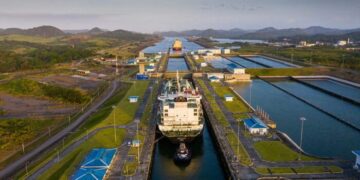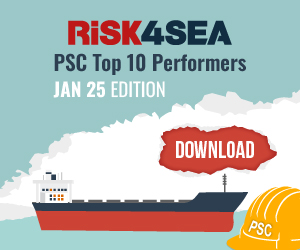A new report by the Maritime Emissions Reduction Centre (MERC) explored how advanced hull coatings, especially silicone-based systems, can help reduce greenhouse gas (GHG) emissions from ships.
There is growing attention on the use of advanced hull coating systems, particularly silicone-based antifouling paints, to reduce fuel consumption and emissions in shipping. Manufacturers claim significant fuel savings of up to around 10%, and as these coatings can be applied during routine dry-docks, they offer a solution for existing ships to help reduce their greenhouse gas (GHG) footprint. Moreover, unlike traditional antifouling systems, some of these coatings do not rely on biocides, providing additional benefits for the aquatic environment.
Silicone-based coatings are fouling release systems with very low surface energies (i.e., nonstick properties) and smooth surfaces compared to traditional coatings. According to the “An Overview of Silicone Based Antifouling Paints” report by MERC, this results in self-cleaning properties, releasing micro fouling (slime) that settles on the surface once the vessel is moving or with a light clean, thus preventing the development of macro (hard) fouling.
Additionally, the smooth surfaces reduce drag, allowing the same speed to be achieved with lower power requirements and reduced fuel consumption. As they are not dependent on polishing, they maintain more consistent performance over the entire docking interval with reduced degradation, offering both immediate “out of dock” benefits from reduced drag and the potential for cumulative benefits throughout the system’s lifespan.
Costs and application requirements
Silicone and hard foul release coating systems are more expensive than traditional antifouling options. Not only is the paint costlier, but there are also stricter requirements for surface preparation and application, with performance relying heavily on achieving a smooth and consistent surface. For example, unlike traditional systems where spot blasting is common, silicone systems require full abrasive blasting to SA2.5.
Given the application challenges, it’s important to note that an extended dry dock period is necessary to meet the paint maker’s application requirements. This period may be further lengthened by factors such as the risk of contamination from painting other vessels in the same dock, which can affect the yard’s schedule.
Additionally, weather conditions can significantly impact both the application process and the long-term performance of silicone systems, adding complexity and potential costs. While costs vary depending on the vessel and coating specifications, they are expected to be about three times higher, or more, than those for a traditional SPC system.
Considerations when specifying a system
Considerations when specifying a system include the suitability and performance of the coating, which depends heavily on the vessel type, age, and particularly its operating profile. While silicone-based systems offer several advantages over traditional SPC antifouling systems, it’s essential to ensure that the system performs effectively not just “out of the dock,” but also during the period between dockings.
Moreover, fouling may still occur under certain conditions, and the risk of mechanical damage to the coating should be considered. Depending on the extent of the damage, this can increase hull roughness, drag, and power demand.
The optimal solution might be a hybrid scheme, combining silicone-based and traditional systems in different areas of the hull. This approach allows the operator to capture efficiency benefits while remaining compatible with the vessel’s operational realities, thus maximizing the expected return on investment.
Validation of savings
The validation of power and energy savings from silicone and hard fouling release coatings remains challenging. Typically, the performance of a vessel with silicone or other advanced antifouling coatings is compared to its condition when it was first delivered from the new building yard.
However, it is difficult to match the same main engine condition, weather, and hull roughness when comparing the new build sea trial to post-silicone application trials. As a result, several assumptions must be made, which may either support or challenge the actual performance of the silicone paint.
Conclusions
Advanced coatings, such as silicone-based antifouling, can be an effective tool for the decarbonisation of the existing fleet. While they require a significant investment, these coatings offer substantial emissions reduction potential without the need for extensive structural modifications or retrofits of new equipment.
However, there is no one-size-fits-all solution, and the real-world performance benefits will depend heavily on the vessel type and operating profile. A careful assessment and analysis are necessary to select the optimal coating system based on both the vessel and its trade.
In many cases, combining traditional and silicone-based antifouling systems (hybrid AFS schemes) on different areas of the hull may provide a cost-effective compromise. Performance monitoring and biofouling management are crucial to maximizing benefits and return on investment, ensuring the coating remains in optimal condition and performs well throughout the docking cycle.
Hull grooming is essential to achieve this and emerging innovations, such as autonomous hull grooming robots, could prove useful, pending approval from coating manufacturers.

































































